Most salespeople lose deals before the first conversation.
Why? Because buyers don’t trust them yet.
Social sellers who build relationships on social media outsell their peers by 78%, not by pitching harder, but by showing up and delivering value.
If you’re just connecting and sending cold DMs, you’re missing the point. Social selling on LinkedIn is about trust, timing, and consistency.
Here’s how to do it right.
6 Best Practices For Better Social Selling on LinkedIn
Social selling isn’t about spamming inboxes or pushing products. It’s about starting conversations, building trust, and staying top of mind.
The bad news is that there are no immediate secret social selling tips and tricks that will increase sales and business growth. You need to go step by step to build relationships with potential customers.
The importance of social selling is shown by the fact that even LinkedIn has its own Social Selling Index (SSI) score. This score reflects how effectively you establish your professional brand, find the right people, engage with insights, and build relationships on the platform.
Do it right, and prospects will come to you.
Here’s how to make LinkedIn work for your social selling strategy:
1. Optimize Your LinkedIn Profile for Credibility
Your LinkedIn profile is your first impression. It either builds trust or sends buyers looking elsewhere.
A strong headline should instantly communicate who you help and how.
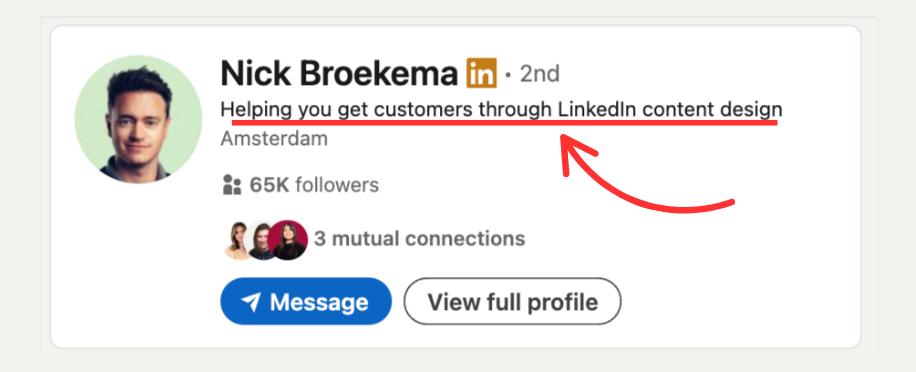
Nick Broekema’s headline is strong because it is clear, customer-focused, and niche-specific. It instantly conveys value and expertise. His professional, friendly photo reinforces credibility and approachability, complementing his strong personal brand.
Your background photo needs to reflect what you offer to immediately establish trust and interest from a potential client.
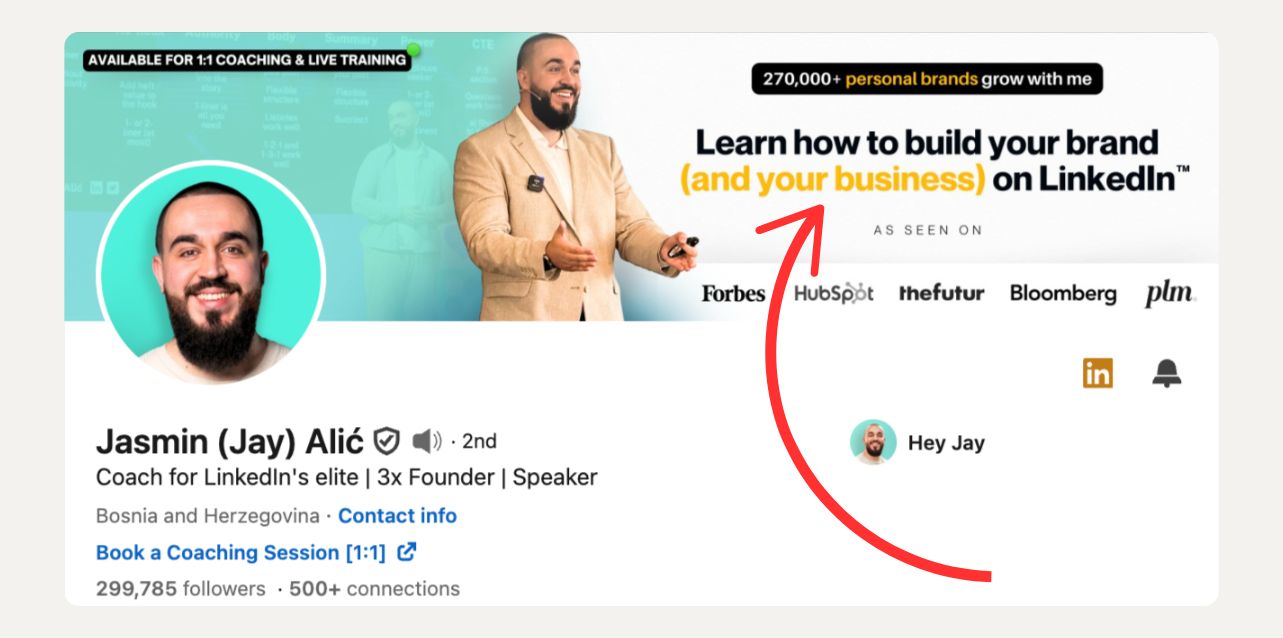
Jasmin’s background photo is highly effective, combining a clear value proposition, strong social proof, and an engaging personal image. The bold design, strategic CTA, and professional branding make it visually compelling and credibility-boosting.
💡 Pro Tip:
Use AuthoredUp's LinkedIn Headline Writer to refine your headline for maximum impact. Write, edit, and change the picture until you're happy with the results so your profile stands out in the feed.

Your “About” section is your chance to tell a value-driven story that makes your expertise clear.
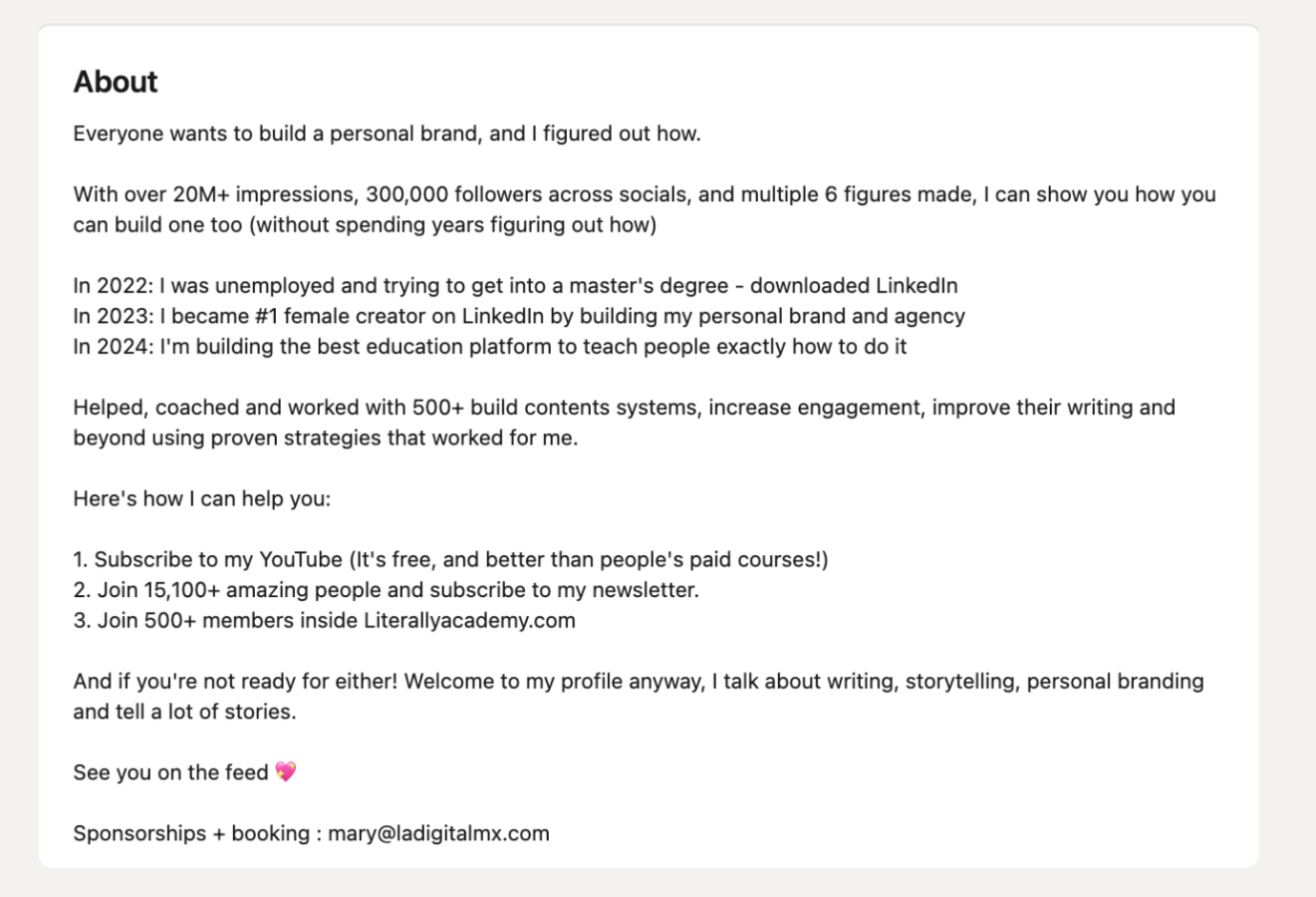
This is Lara Acosta's "About" section, which is effective because it combines credibility, storytelling, and a clear value proposition. It quickly establishes authority with metrics, shares a relatable personal journey, and provides direct ways for the audience to engage, making it compelling and conversion-driven.
You should think of your Featured section as your credibility booster.
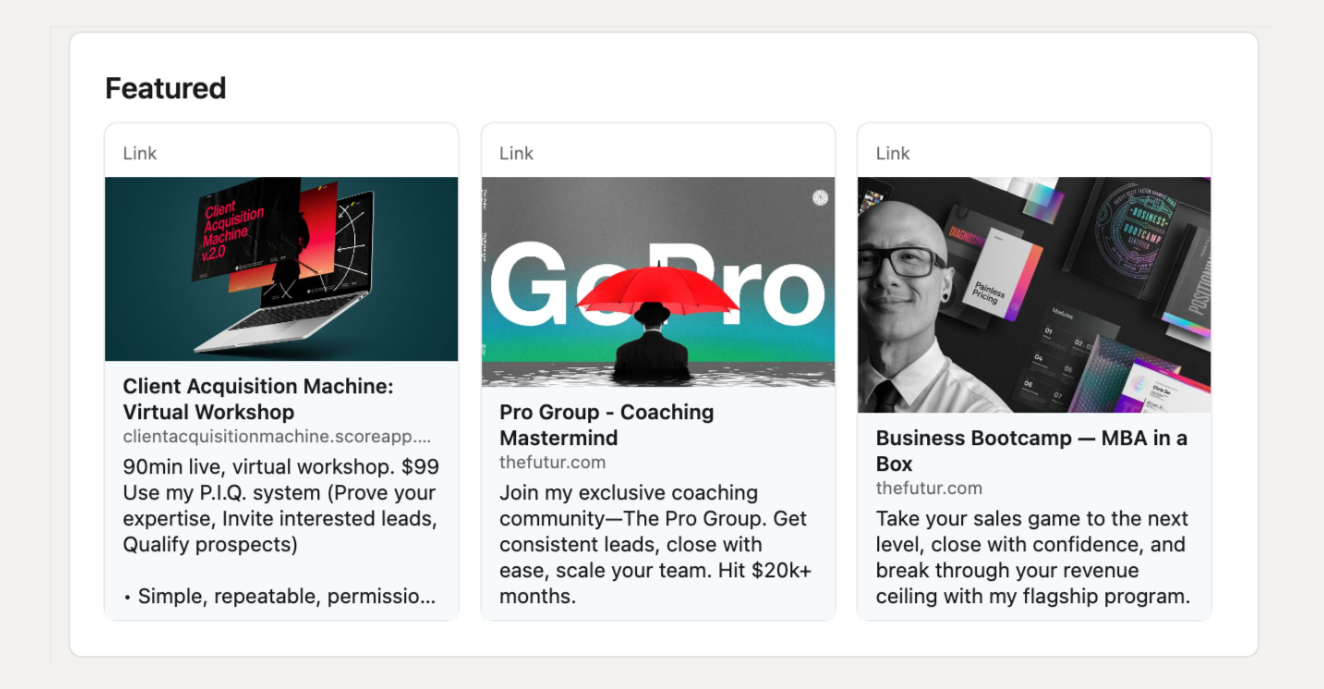
Chris Do's featured section is effective because it clearly showcases his offerings. Each feature has a title, a clear value proposition, and a direct CTA, making it easy for visitors to understand and engage with his content.
Add case studies, testimonials, or high-value content that proves you know what you’re doing.
Buyers check profiles before engaging, so make sure yours convinces them to start a conversation.
💡Pro tip:
When crafting your LinkedIn "About" section, use AuthoredUp's free About Me Writer tool to write and preview how it will look once shared.
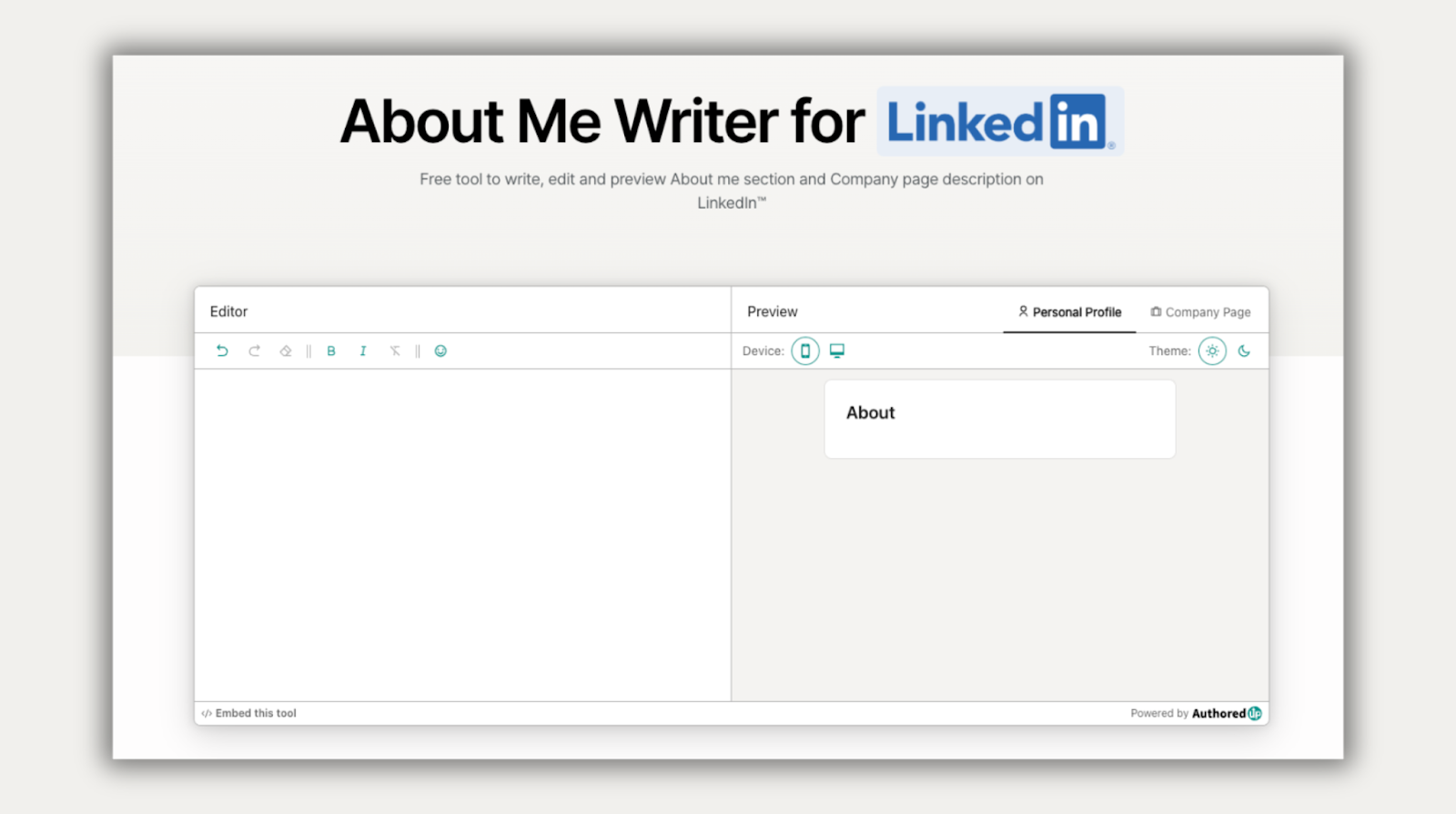
By utilizing this tool, you can ensure your profile effectively communicates your professional story, resonates with your target audience, and enhances your professional presence on LinkedIn.
2. Focus on Building a Targeted Network
Social selling isn’t about collecting random connections.
It’s about building a network of ideal buyers who are actually people who really benefit from what you offer.
Sending a connection request? Make it personal. Give them a reason to connect.
Once they accept, don’t disappear. Engage with their posts, comment thoughtfully, and keep the conversation going.
The stronger your network, the more opportunities you create, without coming across as salesy.
💡Pro Tip:
To effectively track your LinkedIn follower and connection growth, check your Profile Growth Timeline, which provides insights into when you've gained the most connections.
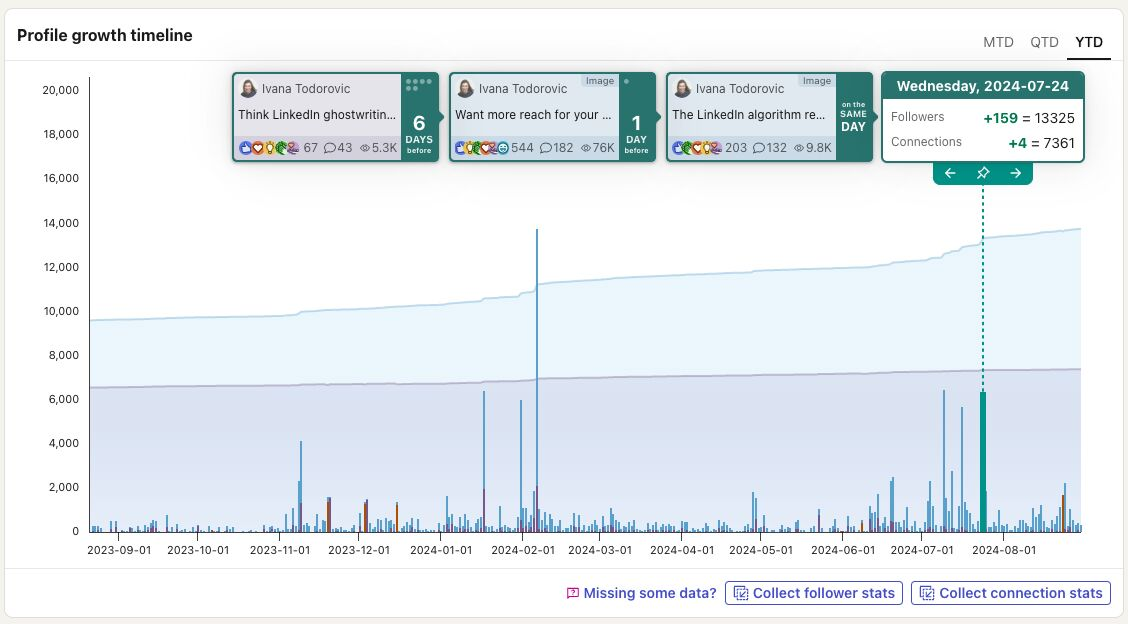
Monitoring this data enables you to identify trends and optimize your networking strategies.
3. Provide Value Through Content & Engagement
Posting once a month won’t cut it.
Consistency builds visibility and trust.
Share insights, industry trends, customer stories, and lessons learned. But don’t just talk, you need to engage.
Comment on posts from prospects and industry leaders.
Ask thoughtful questions. Start conversations. People buy from those they see as experts.
The more you show up with valuable content and engagement, the more inbound opportunities you’ll create.
4. Use DMs for Conversations, Not Pitches
Nothing kills a deal faster than a cold pitch in the first message.
Instead, start with something personal. Reference something they’ve posted. Ask about their work. Keep it open-ended, like you are having a conversation.
If they have a problem you can solve, the opportunity to share your solution will come naturally. Social selling is about relationships, not transactions.
Treat your DMs as an opportunity to network, not a sales funnel.
5. Build Authority with Social Proof
People trust people who’ve already delivered results.
People trust results, not claims.
The easiest way to build authority on LinkedIn is to show, not tell.
Share testimonials and success stories, but don’t be pushy, use them naturally.
Instead of just saying, “Here’s what a client said about us,” turn it into a valuable lesson: “A client was struggling with [problem], so we did [solution], and they saw [result].”
Invite people to leave recommendations on your profile; they also go a long way.
If you want to be recognized as an expert, your content strategy needs to support that. Create posts that demonstrate your expertise with case studies, breakdowns, and problem-solving posts that show you know your stuff.
6. Be Consistent & Play the Long Game
Social selling isn’t a quick hack, it’s a long-term strategy.
You don’t close deals overnight, but the more consistently you show up, the more trust you build.
Stay top of mind by following up with value, not just checking in to “see if they’re interested.”
The strongest LinkedIn sellers aren’t just selling; they’re building relationships that make sales easier over time.
Keep showing up, keep providing value, and the right deals will come to you.
💡Pro Tip:
Maintain a consistent LinkedIn presence by leveraging AuthoredUp for scheduling using the Calendar feature. Plan and schedule your posts in advance, ensuring regular engagement with your audience.
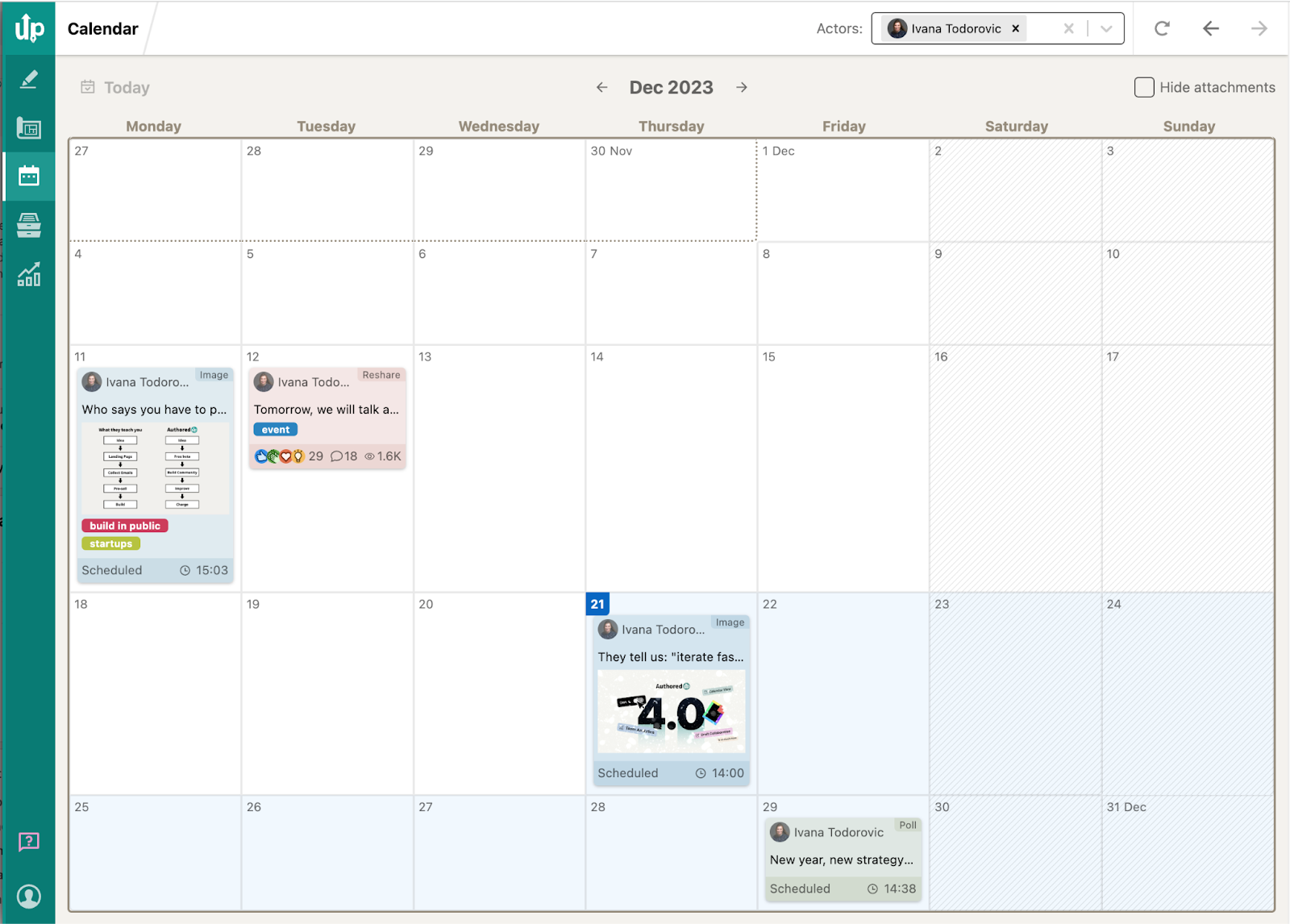
The Calendar provides a clear overview of your content strategy, allowing you to visualize and manage your posting schedule effectively.
5 Common Mistakes That Can Ruin Your Social Selling on LinkedIn
1. Treating LinkedIn Like Cold Email
Copy-pasting the same pitch to every new connection? That’s how you get ignored or worse, blocked.
LinkedIn isn’t a place for spammy outreach. It’s a platform for real conversations.
Instead of pitching in your first message, engage with their content first.
Get on their radar before sliding into their DMs. People buy from those they trust, not those who spam.
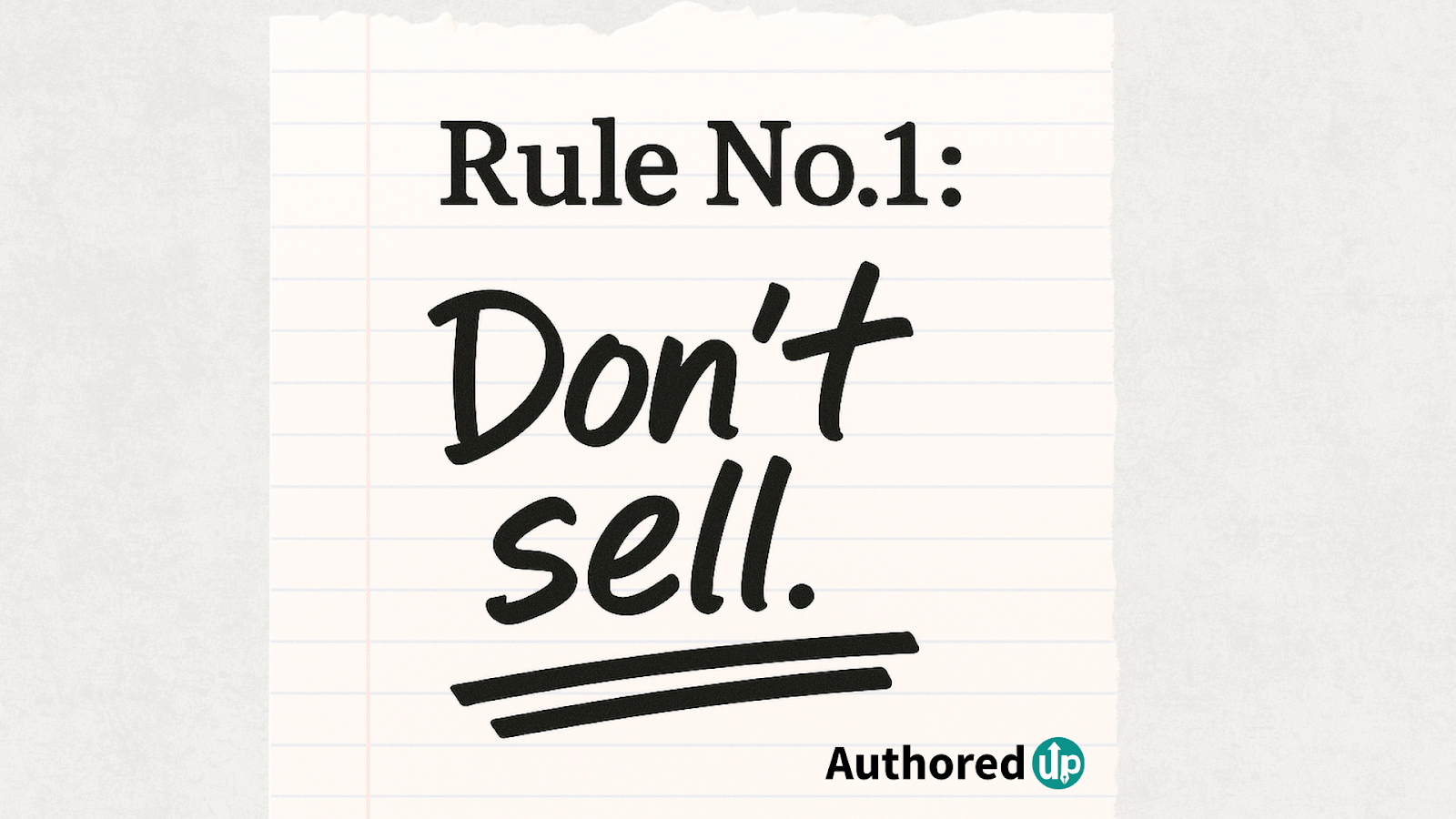
2. Ignoring the Buyer’s Perspective
Most sellers talk about what they do instead of what the buyer needs.
Nobody cares about your product’s features, they care about their problems.
Shift your approach and speak to their pain points.
Frame your content, comments, and messages around the challenges they face and how they can overcome them.
If you make it about them, they’ll listen.
3. Posting Without a Strategy
Posting random updates when you remember to? That’s not a strategy, it’s noise.
If you want LinkedIn to drive results, you need a content plan.
Share posts that provide value and position you as an expert.
A well-structured content approach builds trust and attracts the right people.
4. Only Engaging With Your Own Content
Liking and commenting on your own posts isn’t engagement, it’s an echo chamber.
If you want visibility and stronger relationships, comment on other people’s posts too. Thoughtful comments on your prospects’ content put you on their radar without feeling salesy.
Engage in industry discussions, share insights, and contribute value where your buyers are already active.
The more visible you are in relevant conversations, the more inbound leads you’ll attract.
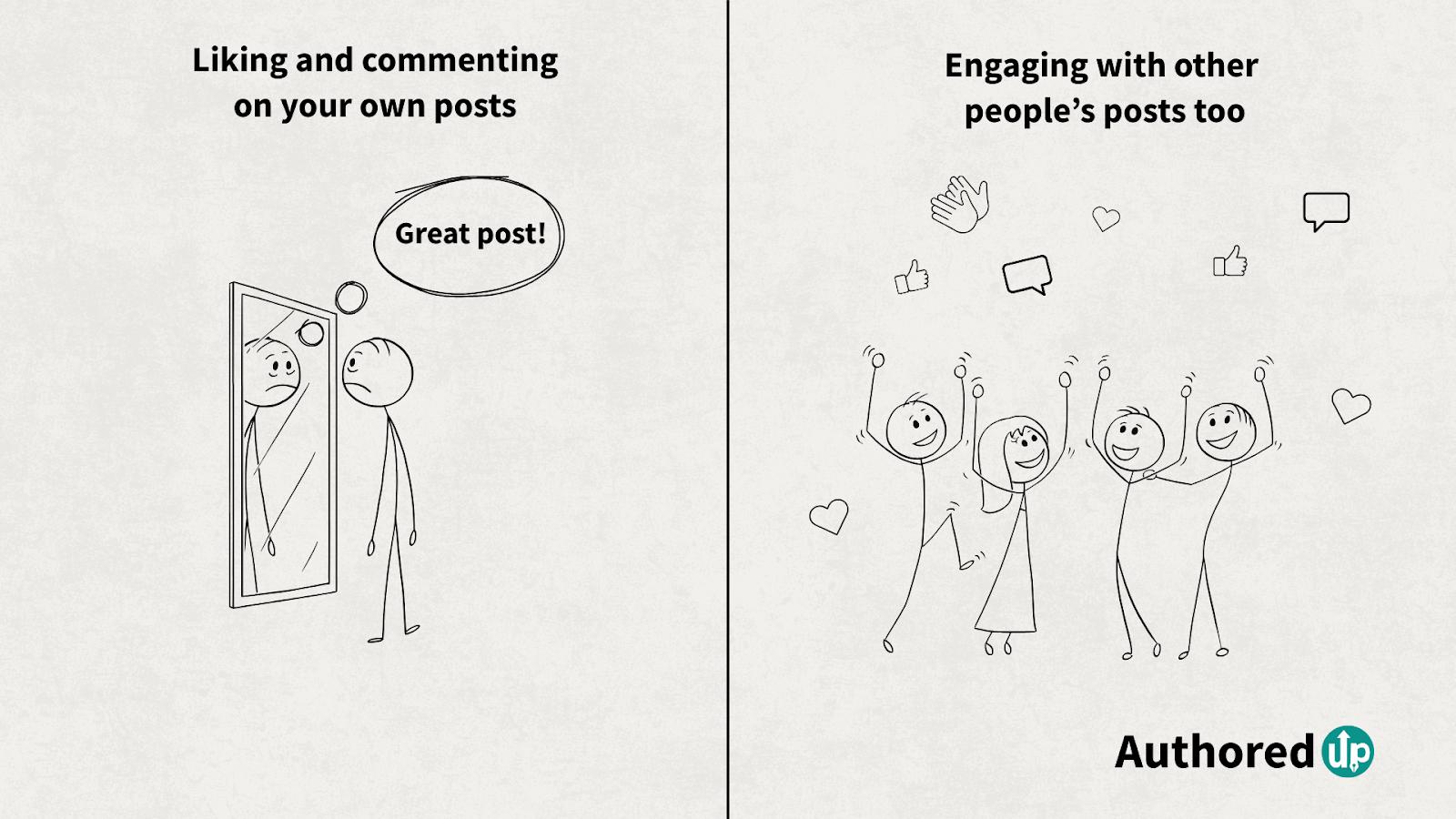
5. Giving Up Too Soon
Most people quit social selling because they don’t see instant results. But LinkedIn isn’t about quick wins, it’s about real dedication.
The more consistently you engage, post, and connect with the right people, the more your efforts compound.
The sellers who stick with it are the ones who turn conversations into deals.
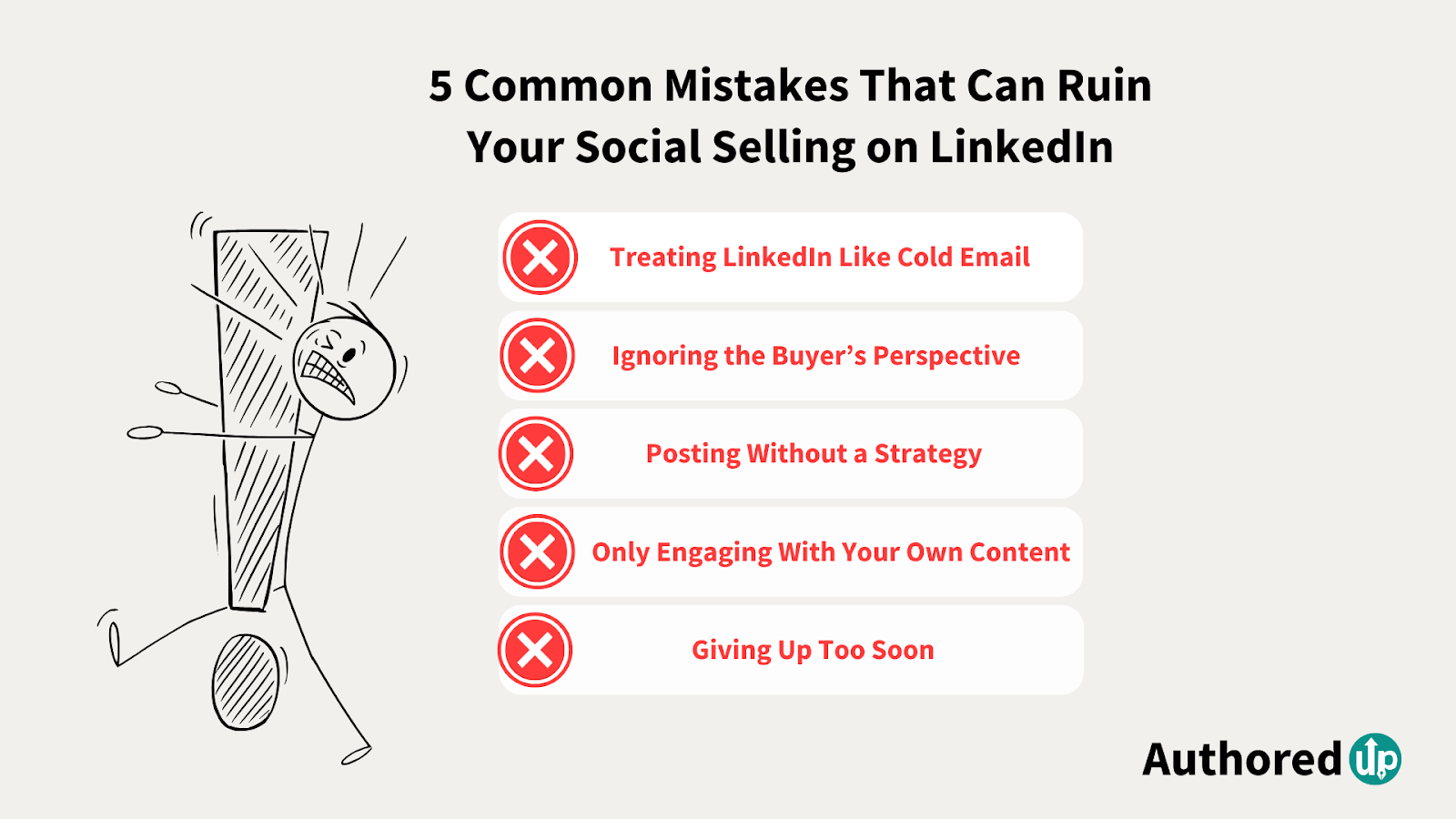
🎁 Bonus: Quick Checklist
Wrapping It Up
Social selling on LinkedIn is about building relationships, credibility, and trust before you even talk about sales.
Some good social selling examples are creating content, commenting, chatting, connecting, and networking, it is all about giving to gain leads, not taking.
The key? Be intentional.
Know who you’re targeting, add value before asking for anything, and engage like a real person, not a salesperson.
Every post, comment, and message is a chance to build credibility.
Keep testing and refining if you want to succeed. The more you show up with a strategy, the easier sales become.
How AuthoredUp Helps You Win at Social Selling
Social selling works when your content is consistent and strategic.
But without the right tools, it’s easy to lose track, miss opportunities, or waste time on posts that don’t convert.
Here’s how AuthoredUp can simplify social selling and improve your LinkedIn strategy:
- Create content that hits harder and faster by formatting posts so they look sharp and draw the right audience.
- Stay consistent without by saving drafts and scheduling ahead.
- See real‑time analytics on every post so you know exactly what’s working.
- Keep posts organized and track interactions to keep the right conversations moving.
With AuthoredUp, social selling becomes simpler, more effective, and scalable. So you can focus on building relationships that drive real sales.
FAQ
How to do social selling on LinkedIn?
Social selling on LinkedIn in 2025 isn’t just sending connection requests and pitching, it’s showing up where your buyers already are. The foundation is a strong profile that proves you’re credible and approachable. Then comes engagement that includes commenting thoughtfully on posts, sharing relevant insights, and starting conversations around what matters to your audience. Social listening plays a huge role so watch out for signals like job changes, industry shifts, or posts that hint at a need you can solve. The goal isn’t to “close” on LinkedIn; it’s to create trust and familiarity so when buyers are ready, they come to you.
What is the LinkedIn sales strategy?
The smartest LinkedIn sales strategy blends visibility, value, and timing. Think of it as a funnel you don’t control but can influence: you create awareness by showing up in feeds, you build trust by offering insight (not just promotions), and you convert when buyers are ready. That means posting isn’t enough, you need to engage with potential buyers’ content, comment on industry conversations, and personalize every touchpoint. A good strategy is less about aggressive outreach and more about becoming the person buyers already trust when they have a need.
What are the best practices for LinkedIn publishing?
High-performing LinkedIn content has two things in common: it’s valuable and it’s easy to engage with. Share insights that help your audience do their jobs better such as quick frameworks, data-backed observations, and lessons from experience. Mix up formats: carousels for step-by-step tips, images for quick hits of context, and short native videos to keep attention. Posting consistently matters more than posting daily; aim for a rhythm you can sustain. And don’t treat publishing as a one-way broadcast. Always respond to comments, start conversations, and keep the momentum going after your posts go live.
What are the 5 C’s of social selling?
The “5 C’s” framework is a useful shorthand for what works. The five C’s of social selling are Content, Conversation, Connection, Collaboration, and Conversion, and they build on each other.
It starts with creating content that teaches, inspires, or sparks discussion, positioning you as someone worth following. That leads to meaningful conversations, where comments and messages turn into trust-building moments.
As you engage, you build real connections with the right people, not just a long list of random contacts. From there, collaboration happens and with it sharing ideas, co-creating content, or supporting each other’s work. Over time, those layers naturally lead to conversion, when relationships evolve into opportunities and sales without feeling forced.



.svg)

.png)
.svg)
.png)
.svg)
.png)
.png)
